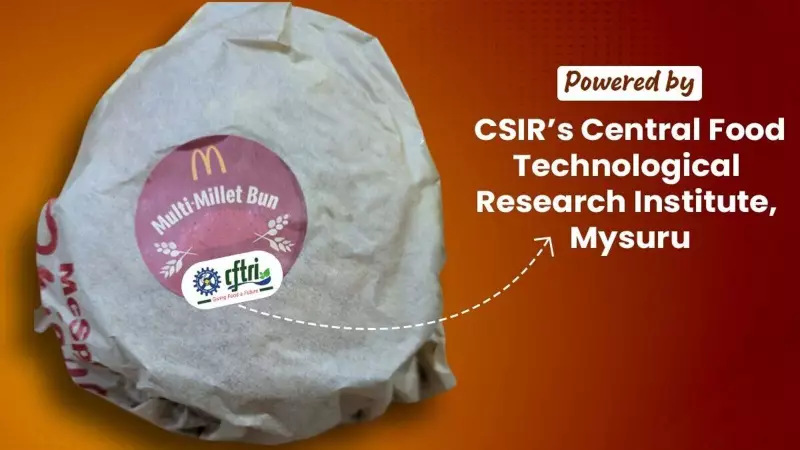
In a revolutionary move that's turning global fast food norms upside down, McDonald's outlets across India have begun serving burgers with a distinct Indian twist – swapping traditional wheat buns for nutritious millet alternatives. This significant shift from 'videshi' to 'swadeshi' is being hailed as a game-changer in the international food industry.
The Great Indian Millet Revolution
The Centre has enthusiastically endorsed this transformation, highlighting how India's ancient grain is now reshaping contemporary dining habits. What began as a traditional staple in Indian households has now found its way into one of the world's most recognizable fast-food chains, creating a unique fusion of global convenience and local nutrition.
Why Millet Matters
Millet isn't just another grain – it's a nutritional powerhouse that offers numerous health benefits:
- Rich in fiber, protein, and essential minerals
- Gluten-free alternative to wheat
- Environmentally sustainable crop requiring less water
- Low glycemic index, making it ideal for diabetics
Global Impact of Local Innovation
This initiative represents more than just a menu change – it's a statement about India's growing influence on global food trends. The successful integration of millet into McDonald's offerings demonstrates how traditional Indian ingredients can find acceptance in international food chains, potentially paving the way for similar adaptations worldwide.
The government has emphasized that this move aligns perfectly with India's broader mission to promote millet consumption both domestically and internationally. By incorporating this ancient grain into modern fast food, McDonald's is helping bridge the gap between traditional nutrition and contemporary convenience.
Consumer Response and Future Prospects
Early responses from Indian consumers have been overwhelmingly positive, with many appreciating the healthier alternative without compromising on taste. The millet buns maintain the familiar texture and flavor that customers expect, while offering additional nutritional benefits.
This strategic shift could potentially influence other international food chains to consider similar adaptations, further solidifying India's position as an innovator in the global food industry. The success of this initiative might encourage more restaurants to explore traditional Indian ingredients, creating new opportunities for local farmers and producers.
As more consumers become health-conscious and environmentally aware, such innovations represent the future of fast food – where global brands adapt to local nutritional wisdom, creating a win-win situation for both businesses and consumers.





